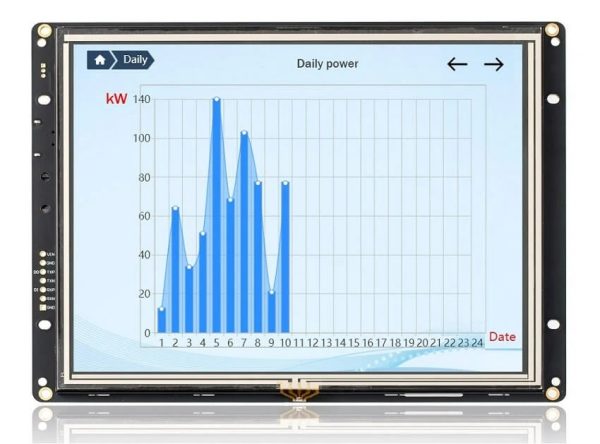In the realm of gas station operations, the choice of Point of Sale (POS) systems plays a critical role in ensuring efficient transactions and customer satisfaction. One key component of modern gas station POS systems is the TFT (Thin-Film Transistor) screen. This article explores the suitability of TFT screens for gas station POS setups, highlighting their benefits, considerations for deployment, and future potential.

Introduction to Gas Station POS Systems
Gas station POS systems serve as the primary interface between customers and the station’s services. They facilitate transactions for fuel, convenience store items, and sometimes car wash services. Modern POS systems integrate various components such as payment processing, inventory management, and customer relationship management (CRM) functionalities.
The Role of TFT Screens in Gas Station POS Systems
TFT screens have become increasingly popular in gas station POS systems due to their distinct advantages over other display technologies. These screens use thin-film transistor technology to enhance image quality, response time, and energy efficiency compared to older LCD screens.
Advantages of TFT Screens
TFT screens offer several advantages that make them suitable for gas station POS systems:
- Image Quality: TFT screens provide high-resolution displays, ensuring clarity in displaying transaction details, promotions, and advertisements.
- Response Time: With faster response times compared to traditional LCD screens, TFT screen reduce lag during transaction processing, improving overall efficiency.
- Durability: Designed to withstand varying environmental conditions, including temperature fluctuations and exposure to sunlight, TFT screen are robust and reliable for outdoor use.
- Energy Efficiency: TFT technology consumes less power than older display technologies, contributing to operational cost savings over time.
- Flexibility: TFT screens come in a range of sizes, allowing gas stations to choose the optimal screen size based on their layout and visibility needs.
Considerations for Deploying TFT Screens in Gas Stations
Deploying TFT screens in gas station POS systems requires careful consideration of several factors to maximize their effectiveness and durability.
Environmental Factors
Gas stations are exposed to harsh environmental conditions, including temperature extremes, humidity, and exposure to sunlight. TFT screen chosen for gas stations should be rated for outdoor use and equipped with features such as anti-glare coatings to maintain visibility in bright conditions.
Integration with POS Software
Compatibility with existing POS software and hardware infrastructure is crucial for seamless integration. TFT screen should support the required communication protocols and software interfaces to ensure reliable operation within the POS ecosystem.
Maintenance and Support
Regular maintenance is essential to ensure optimal performance and longevity of TFT screens. Gas stations should consider service agreements and support options from manufacturers or vendors to address potential issues promptly.
Future Trends in TFT Technology for Gas Station POS
The evolution of TFT technology continues to offer new opportunities and advancements for gas station POS systems.
Enhanced Display Technologies
Advancements in TFT technology are expected to focus on further improving display resolutions, color accuracy, and contrast ratios. These enhancements will contribute to more immersive and informative customer experiences at gas station POS terminals.
Integration with IoT and Analytics
Future TFT screens may incorporate IoT (Internet of Things) capabilities to gather data on customer behavior, fuel consumption patterns, and operational metrics. Integrating TFT screens with analytics platforms can provide gas stations with valuable insights for business decision-making and customer engagement strategies.
Sustainability and Energy Efficiency
Continued emphasis on energy-efficient designs will drive the development of TFT screen that consume even less power while maintaining high performance. Energy-efficient displays contribute to reducing operational costs and environmental impact.
Conclusion
TFT screens have emerged as a highly suitable choice for gas station POS systems, offering superior image quality, durability, and energy efficiency compared to traditional display technologies. As technology continues to advance, TFT screen are expected to play an increasingly integral role in enhancing customer experiences and operational efficiencies at gas stations worldwide. Gas station operators looking to upgrade their POS systems should carefully evaluate TFT screen based on their specific operational needs and future growth plans. By leveraging TFT technology effectively, gas stations can optimize transactions, improve customer satisfaction, and stay competitive in a dynamic market landscape.